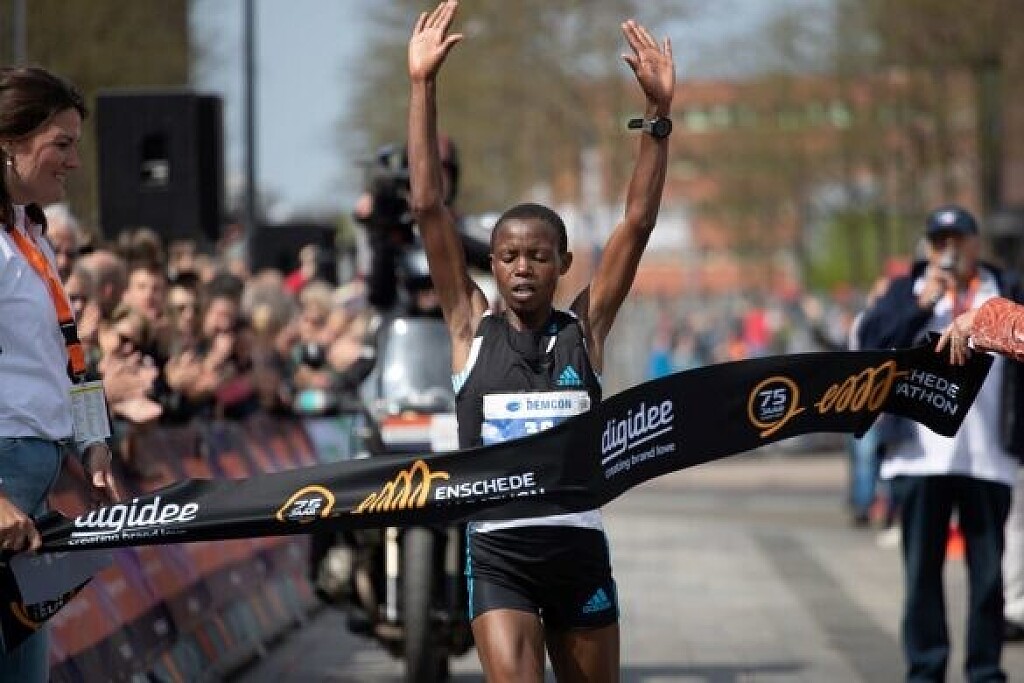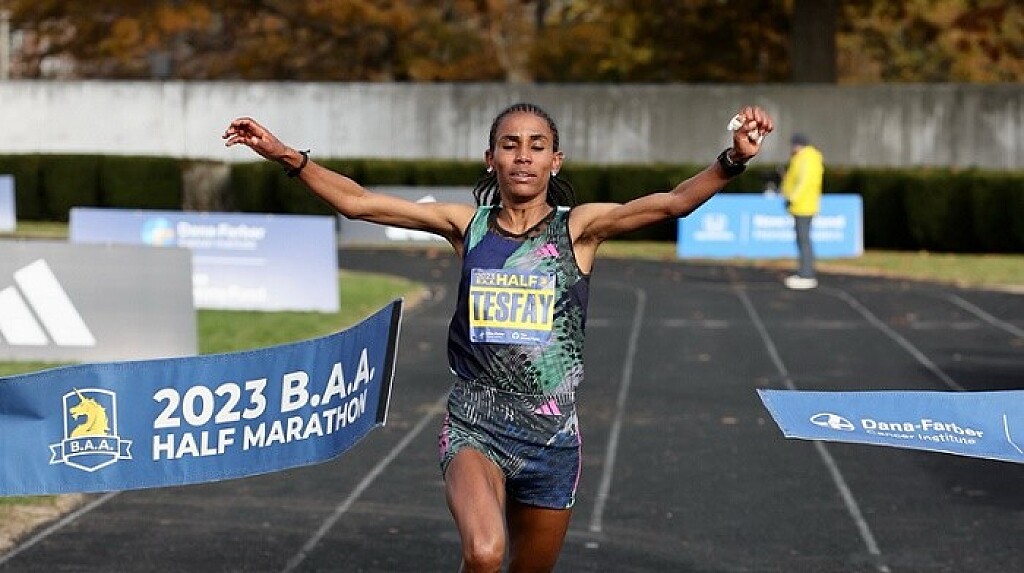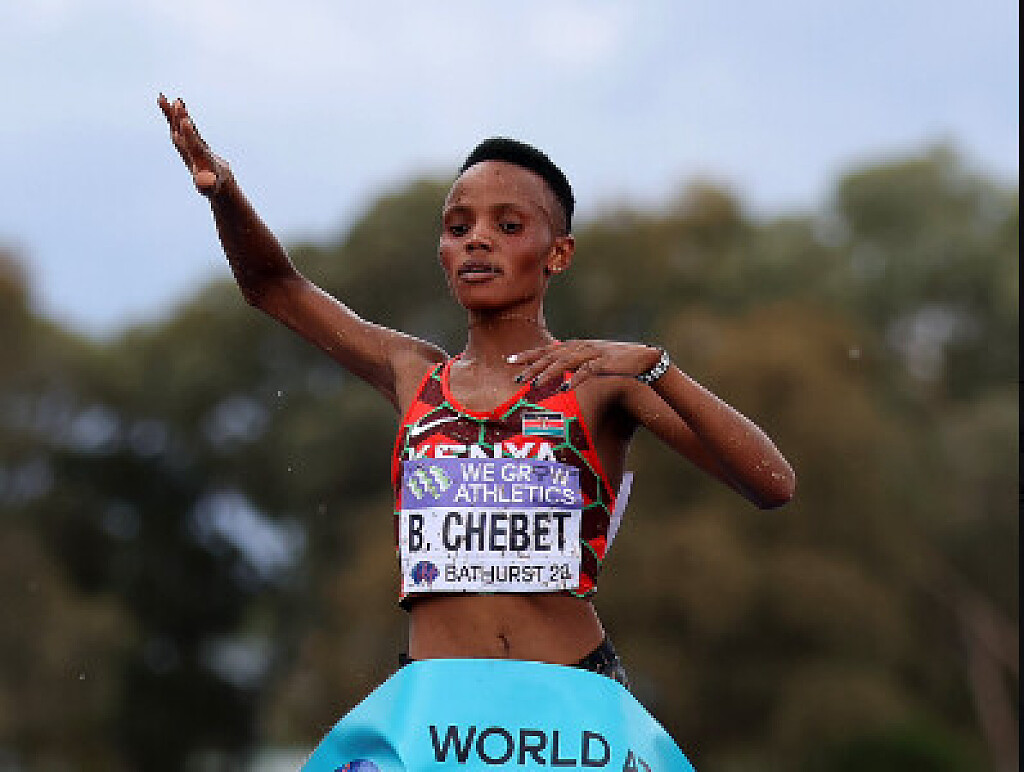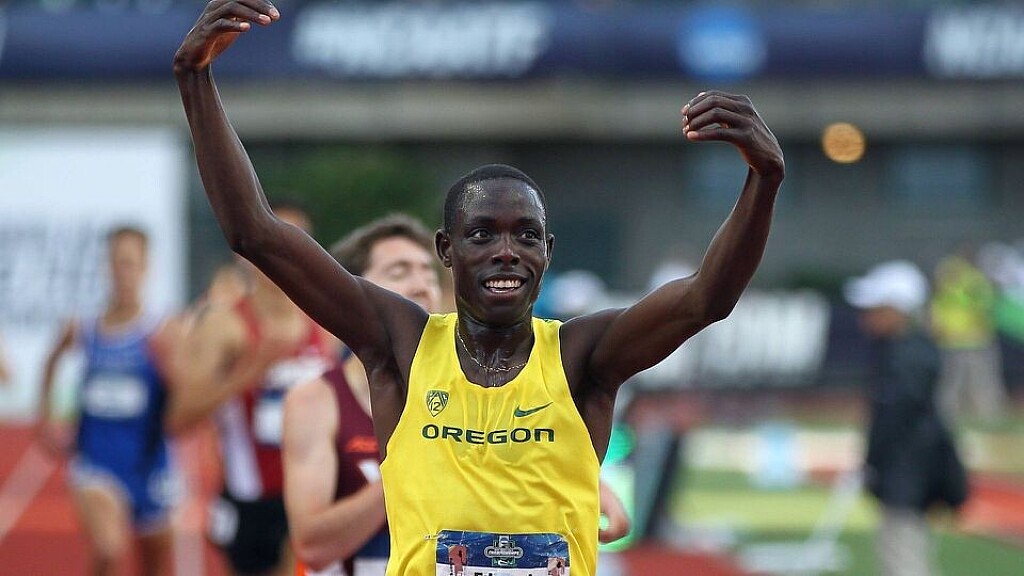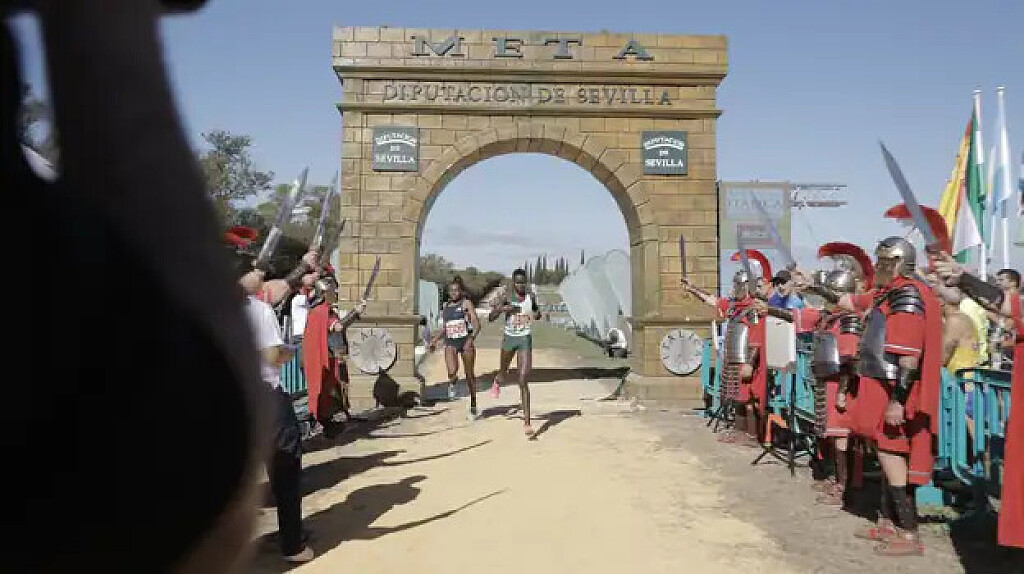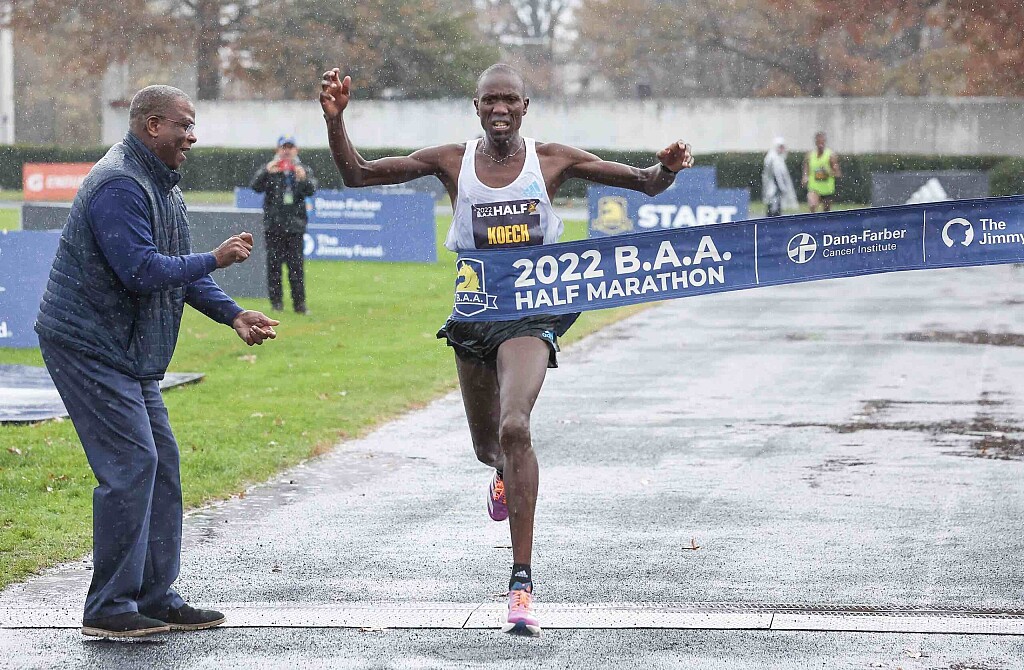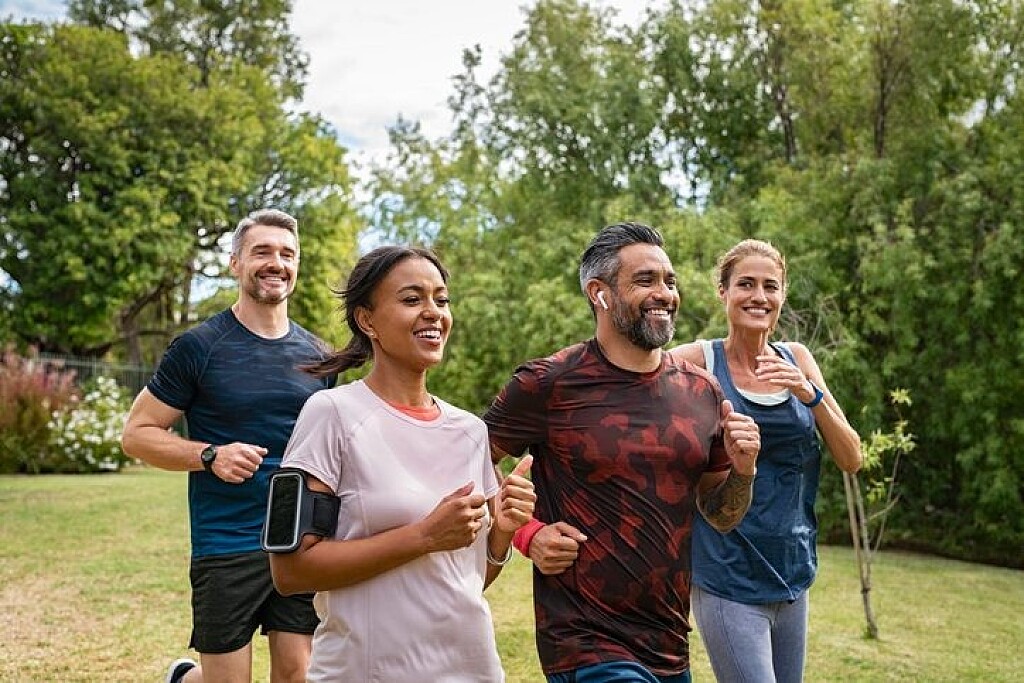Running News Daily
Top Ten Stories of the Week
11/18/2023
These are the top ten stories based on views over the last week.
How to use time off to make you a stronger and faster runner
New Brunswick-based coach Stephen Andersen explains how to use time off to make you a stronger, faster runner.
The fall racing season is coming to a close, and if you’re not already there, the off season is at your doorstep. Whether you appreciate taking some time off training or you loathe getting out of your regular running routine, one thing is certain: downtime is an important part of your training plan. We spoke with coach and agent Stephen Andersen of Fredericton, who explained how runners can maximize their downtime so they come back healthier and stronger for their next training block.
For starters, Andersen doesn’t like the term “off-season:” “Running is a year-round sport, despite the sometimes crummy weather we get in Canada,” he says. “Instead, I like to frame it as taking downtime.”

This downtime, he says, should usually follow a big goal race or tough training block. For example, he says it’s important to take some time off after a marathon, because it allows your body to rest and recover. He adds that taking some downtime can also help your body absorb your previous block of training, so you can return to running feeling rested and ready to work hard. It also helps to mentally reset and prepare for your next goal.
How long should your downtime be?
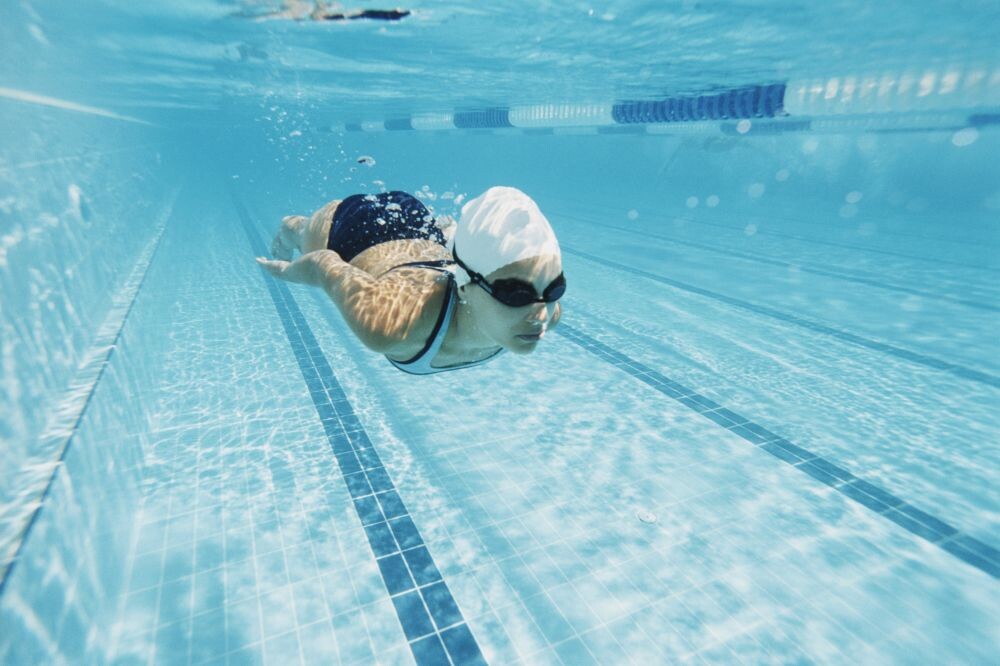
This, Andersen says, will vary from runner to runner, and will depend on several factors, including what kind of race you’re training for, what your cross-training is like and how your body is feeling. “It is very contextual and individualistic,” he says. “For some people, one week of downtime is plenty. Others need a couple of weeks to a month of downtime before ramping back up into training.”
He notes that even two-time Olympic champion and former world record-holder Eluid Kipchoge takes it easy for about a month following a big goal marathon.
Should you run during your downtime?
Again, this depends. Andersen says the important thing is that runners keep moving during their downtime, since not moving can lead to tendon issues and other injuries when you start running again. Being too sedentary during downtime is one of the biggest mistakes he sees runners make.
“It will shock the system when you return to run,” he says. “Think of a gas fireplace. You leave the pilot on for most of the year, so when you need to turn up the heat, you are able to do it seamlessly and quickly, usually with no issues.” Turning that pilot off for too long, on the other hand, can lead to trouble.
He encourages runners to incorporate cross-training to maintain some base fitness during their downtime, such as cycling, pool running, swimming, cross-country skiing or using the elliptical. “This takes some of the impacts off the body, but also ensures you are keeping your muscles and tendons active, so there isn’t a shock when you return to running,” he says.
This doesn’t mean you can’t do any running at all during your downtime. If you’re taking more than one week off training, Andersen says you can incorporate one or two short, easy runs per week to keep your body used to the impact of running. “If someone is taking three weeks of downtime, the first week off I may suggest running once, the second week two or three times, and the third, three or four runs, with some easy elliptical and biking mixed in during each of those weeks,” he says.
You can also try participating in other sports during your downtime, which can help you develop skills that will make you a better runner, such as explosiveness, mobility and stability. Just be careful that you don’t get injured playing a different sport if you have a big running goal on the horizon.
The bottom line
Taking downtime to allow your body to rest and recover is an important part of your training plan and shouldn’t be neglected. As long as you continue moving and then return to running gradually so your body has time to adjust, a little time off will make you a better runner.
(11/11/23) Views: 104Brittany Hambleton
Caroline Jepchirchir headlines Athens Marathon
The reigning Iten Marathon champion, Caroline Jepchirchir will be the star to watch at the 40th edition of the Athens Classic Marathon scheduled for this Sunday (12) in Athens, Greece.
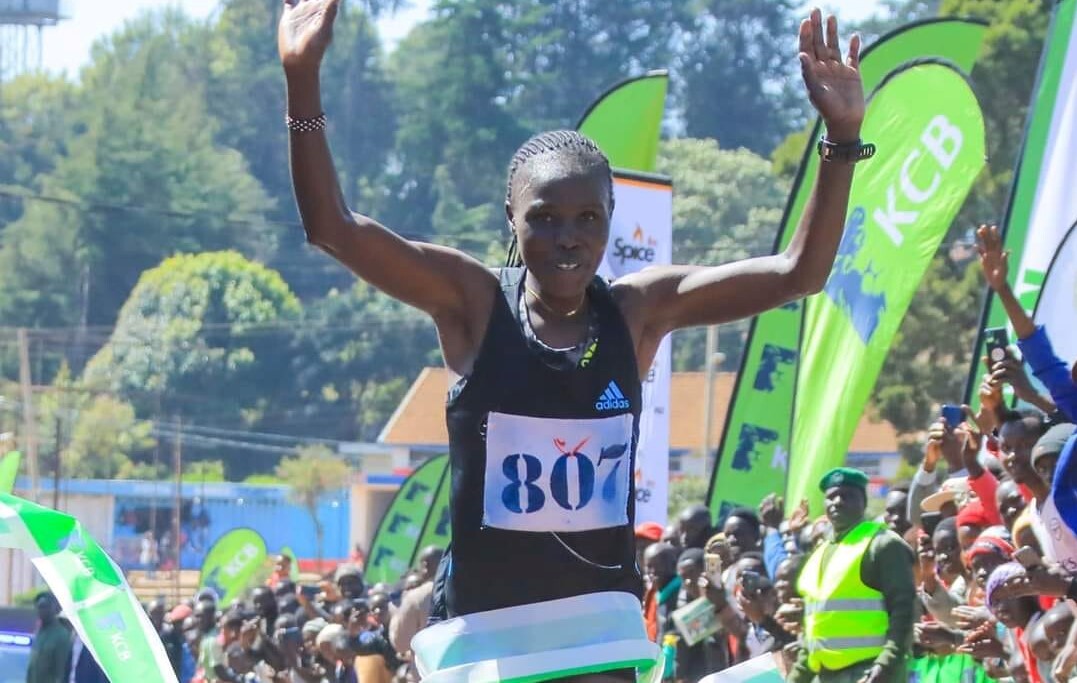
The 35 year-old comes to this race with a personal best 2:26.11 that she got last year at the Enschede Marathon where she finished in fourth place.
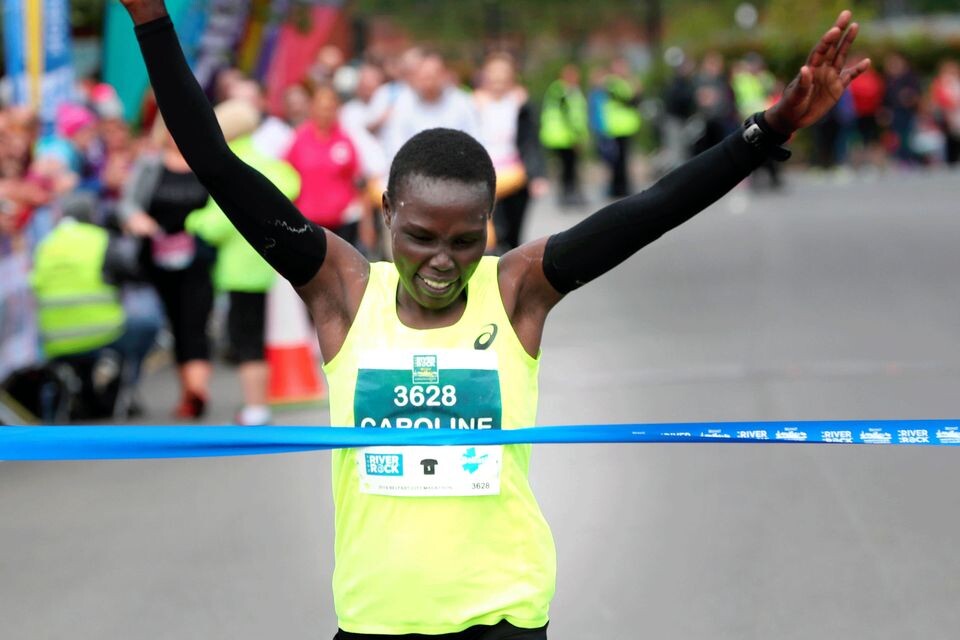
Jepchirchir will battle for honors with eleven time Lithuania’s National champion, Vaida Zusinaite-Nekriosiene, who comes to this race with a life time best of 2:32.50 that she got in 2016 at the Hannover Marathon.
Jepchirchir will be targeting to lower the race course record of 2:31.06 set thirteen years ago by Lithuania’s Rasa Drazdauskaitė.
(11/11/23) Views: 95
John Vaselyne
You shouldn’t try to make up a missed workout–here’s why
It can be challenging to fit consistent running along with a busy life, and sometimes you may have to miss a scheduled run, or several. The nagging guilt when your running plans go awry can be insidious, but don’t let it tempt you into cramming the missed runs back into your schedule. You risk injury, overtraining and burnout. Here’s what you need to know about missing some scheduled training.
Don’t overload to compensate

Just don’t do it. It can be incredibly tempting to try to “make up” your missed workouts by doubling up on time and effort. Most runners already don’t focus enough on rest, and a few extra recovery days will not only not cause a huge setback in your training–you might just find that you feel stronger because of it.
Training plans are designed to be dynamic and adaptable, even though many runners feel like they are set in stone. If you miss a specific workout, it doesn’t mean that progress is lost. Tweaking your future workouts to accommodate the missed session (adjusting the actual running that is scheduled, ie. shifting your plan back a week if you can) can be more beneficial than trying to cram in extra training. If you are really concerned, talk to an experienced runner or coach to help you adjust your training. Just don’t squeeze more running in-adding more stress to an already overwhelmed schedule is a recipe for disaster.

Adjust your mindset
Running is all about the long game. While at the time, missing a few workouts may seem like a setback, in the long run, a bit of extra rest is probably the exact thing your body and mind need. Our bodies don’t differentiate between physical and mental stress, and it’s likely that whatever derailed your training has some form and amount of added stress.
Know that the break you are taking now, while perhaps uncomfortable, will likely be beneficial to you in the long run, and at the very least not detrimental. After all, you probably want to run for years and decades to come. Learning how to successfully navigate challenging times and missed workouts will become one more tool for you to boost your running longevity.
Reflect and move forward
Let that sh*t go, as they say. Recognize that you are doing the best that you can with the skills and supports available to you, even if that doesn’t look the way you’d like it to. Dwelling on what you’ve missed or worrying about lost fitness may actually set you back, as it contributes to burnout.
What can be useful is to look at why, exactly, you missed your workout (s). Were you sick, or were you simply not wanting to run? (Either reason is a valid one, you’re aiming to have no self-judgment here.) Maybe you were dealing with unexpected family or work stress–these challenges happen to everyone, even the pros, who also, you guessed it–occasionally can’t fit in planned runs.
Looking to the future, can you plan to give yourself more grace and cope more easily through the inevitable challenging times that life throws at us? Maybe there is a plan you can have in place to adjust your training temporarily to accommodate a different schedule, like hitting up a local 24-hour gym for a few sessions (if you must–missing workouts is normal and OK) or simply heading out for shorter runs just to get that healthy physical and mental boost. Make sure that you aren’t overdoing it–the most important thing to remember is that a few missed running days are not worth stressing over.
(11/13/23) Views: 95Keeley Milne
Ethiopians sweep women's B.A.A. Half Marathon, Kenyan wins men's race
The 2023 B.A.A. Half Marathon presented by Dana-Farber Cancer Institute and the Jimmy Fund took place today, November 12, starting and finishing within Boston’s Franklin Park. Personal bests and fast times were achieved on a chilly fall day. Preliminary results can be found here.
In the professional open divisions, Fotyen Tesfay (Ethiopia) and Abel Kipchumba(Kenya) took home the women’s and men’s titles respectively, while Jenna Fesemyer and Hermin Garic, both of the USA, captured the wheelchair division victories. American Paralympian Liz Willisset a world record in the T61-64 division (lower limb impairment) in a time of 1:45:19. Among today’s finishers were more than 600 athletes representing the Dana-Farber Cancer Institute and Jimmy Fund, raising more than $700,000 to defy cancer.
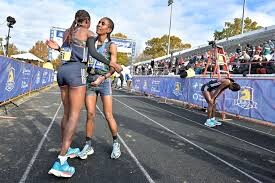
Warming up through the early miles, Tesfay and a sizeable lead pack passed 5 miles in 27:10 and 10 miles in 53:17. The race began to intensify as Tesfay, American record holder Keira D’Amato, B.A.A. 5K champion Senbere Teferi, and World Cross Country Championships silver medalist Tsigie Gebreselama covered the hilly course along Boston’s Emerald Necklace Park System.
While it was a pack with 5K to go, Tesfay was all alone entering White Stadium, breaking the tape in 1:08:46. In her Boston debut, Tesfay not only conquered the competition but also the cold temperatures.
“The pack was so big, but I managed to move ahead of them as I got close to the finish to take the win,” said Tesfay. “This is my first time running a half marathon in Boston and the coldest race I have ever run, so I am very happy to win.”
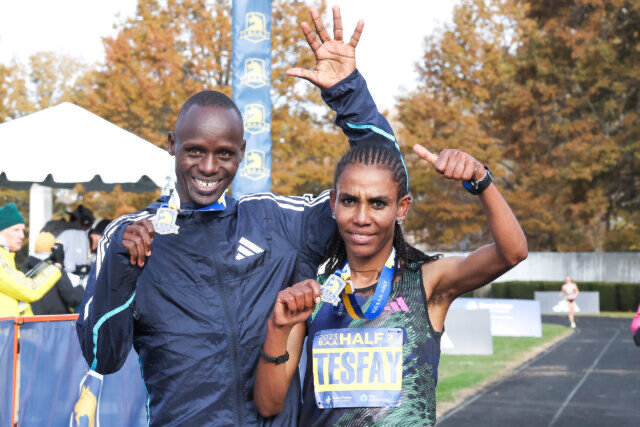
Teferi (ETH) and Gebreselama (ETH) rounded out the podium in 1:09:00 and 1:09:06, followed by D’Amato as the top American in 1:09:12.
In the men’s race, Kipchumba was determined to improve upon a ninth place finish a year ago. Running with Australian Olympian Pat Tiernan and defending champion Geoffrey Koech (Kenya) through five miles, Kipchumba began to break away little by little. At six miles it was a seven second lead, then at 10 miles the gap stood 30 seconds.
Kipchumba’s broke the tape all smiles in 1:01:32 with a hard-charging Tiernan second (1:01:56) and Yemane Haileselassie third in 1:02:17. Sam Chelanga, who won a silver medal in the 10,000m at the Pan Am Games on the track last week, was top American, seventh in 1:02:49.
“Today was difficult because it was very cold. And as we know, Boston has a lot of hills. But I managed to win the race, so I am happy,” said Kipchumba. “I like the crowds. They cheered me and I got a lot of energy to push the pace.”
(11/12/23) Views: 93Beatrice Chebet ready to star in Seville
The Cross Internacional de Itálica in Santiponce on the outskirts of the Spanish city of Seville – the fourth Gold standard meeting in the current World Athletics Cross Country Tour – always boasts a mouth-watering line-up, and this year’s race on Sunday (12) is no exception.
Entries for the women’s race, contested over 9.9km, are headed by Kenya’s world cross-country and 5km champion Beatrice Chebet. The 23-year-old triumphed in Atapuerca two weeks ago and will be looking for her first victory here after her runner-up place in 2020 and a third place the following year.
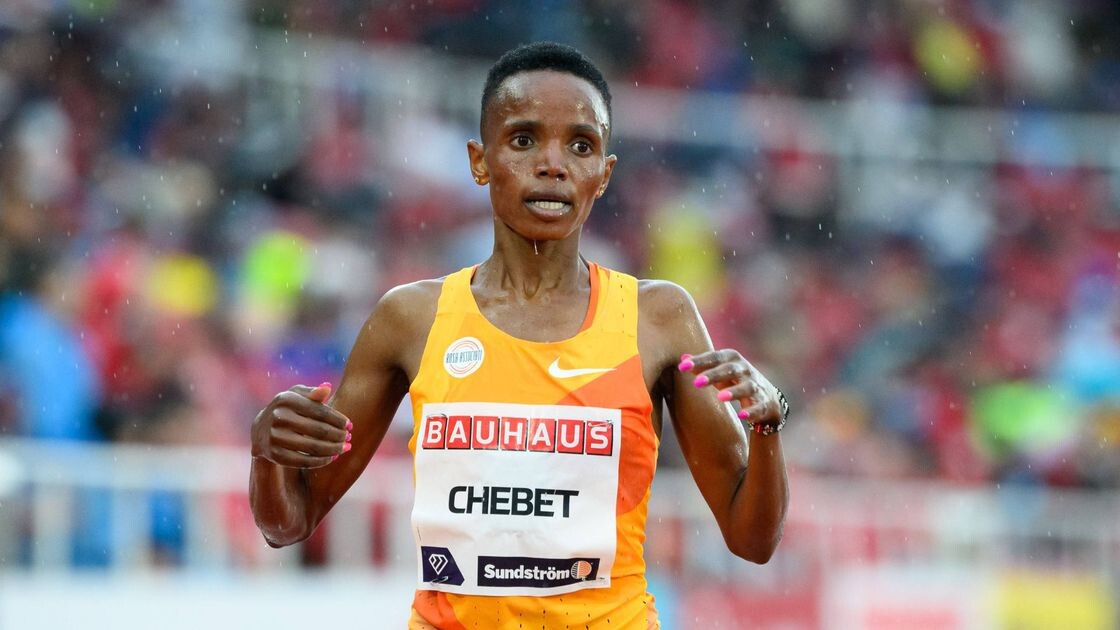
The world 5000m bronze medalist will be joined by her compatriot Edinah Jebitok, who was eighth at the World Cross in Bathurst and third in Atapuerca. The 1500m specialist was also a clear winner in San Sebastian last weekend.
World U20 cross-country champion Senayet Getachew and fellow Ethiopian Wede Kefale – who was 15th in the senior women’s race at this year’s World Cross – will also be in contention for a podium place.
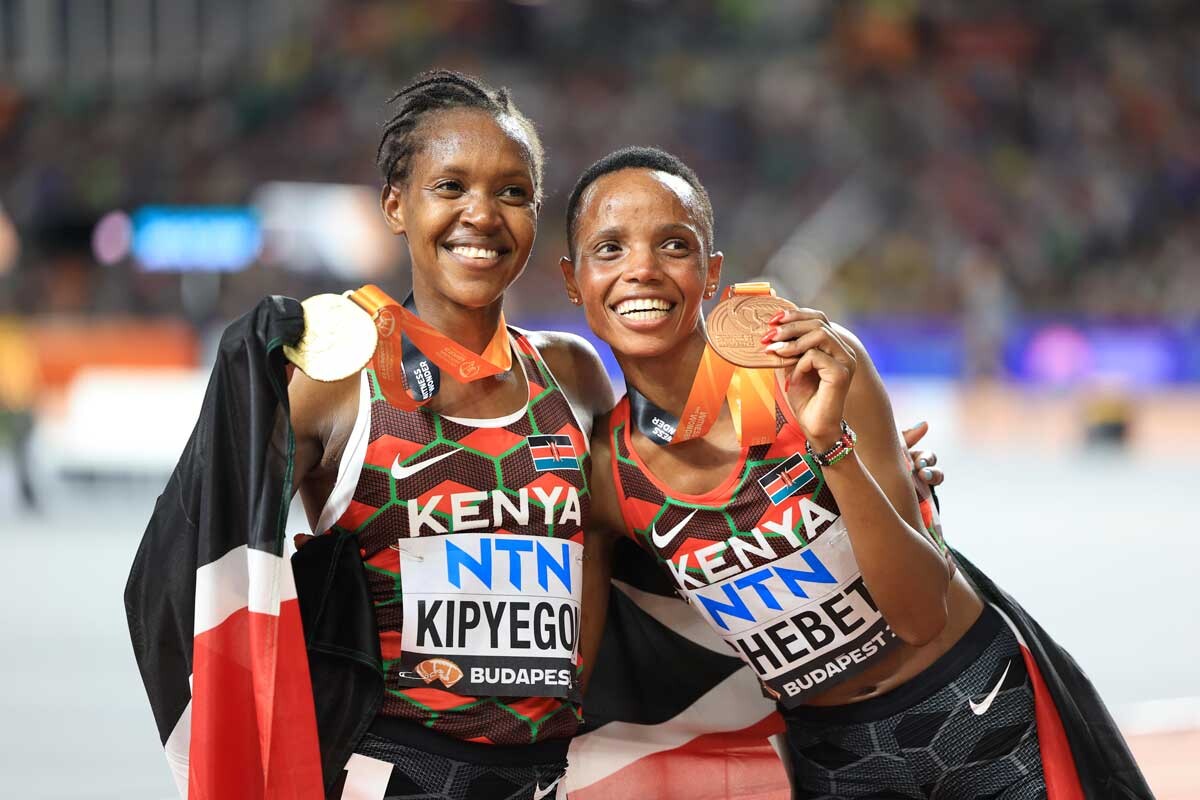
Uganda's Anne Chelangat, 13th at the World Cross and third last week in San Sebastián, is another strong contender.
World and Olympic finalist Nadia Battocletti will be racing in Santiponce for the first time. She recently placed fifth in the 5km at the World Road Running Championships in Riga, finishing just 10 seconds shy of Chebet, so will be trying her best to stay in contention with the Kenyan on Sunday.
The line-up also includes Spanish steeplechasers Irene Sánchez-Escribano and Carolina Robles plus European U20 cross-country champion María Forero and Britain's Amelia Quirk, who was 25th in Bathurst.
The men’s 9.9km contest looks set to be a three-way battle between the Kenyan pair of Ronald Kwemoi and Ishmael Kipkurui plus Burundi's Rodrigue Kwizera.
The 28-year-old Kwemoi will compete for the third consecutive time on Spanish ground after his runner-up spot in Atapuerca two weeks ago and a narrow win over Kipkurui last Sunday in San Sebastián. On that occasion, world U20 cross-country champion Kipkurui pushed hard for most of the race but he couldn't avoid being overtaken by world U20 1500m record-holder Kwemoi in a thrilling sprint finish with the two men being separated by one second.
Their Kenyan compatriot Hillary Chepkwoni, fresh from a huge PB of 58:53 at the Valencia Half Marathon three weeks ago, will also be on the start line.
Kwizera, co-winner of the 2022-2023 World Cross Country Tour, finished eighth at the World Cross Country Championships in Bathurst at the start of 2023. More recently he placed third in Atapuerca where he was beaten by Kwemoi over the closing stages but grabbed an easy victory last weekend in his Spanish base of Castellón at a low-key cross country race.
Eritrea’s Aron Kifle, the 2018 world half marathon bronze medalist, will be making his 2023 cross country debut on Sunday. He’ll be joined by compatriot Merhawi Mebrahtu, the world U20 5000m silver medalist, who finished second in Amorebieta and ninth in Atapuerca the following week.
Uganda’s 2022 world 5000m bronze medalist Oscar Chelimo, who recently finished third in San Sebastian, will contend for a top-five finish on Sunday. The 21-year-old will be joined by his compatriot Martin Kiprotich, who finished 18th at the World Cross in Bathurst.
The Spanish contingent will be headed by Mohamed Katir. The world 5000m silver medalist has been training in the altitude of Sierra Nevada since mid-October and will be back there right after the race for another week. He has planned a quiet cross-country campaign with only a few appearances.
Other Spaniards in the line-up include the in-form Abdessamad Oukhelfen, who was fourth in San Sebastian behind Chelimo, 2017 European cross-country silver medalist Adel Mechaal and national silver medalist Sergio Paniagua.
Adrian Ben, who finished fourth over 800m at this year’s World Championships, could also be in contention. The 25-year-old was a 1500m specialist at the beginning of his career and there's talk of a potential move back up in distance ahead of the Paris Olympics. Ben is fresh from a cross country victory over 5km in his native Lugo last Sunday when he defeated steeplechaser Víctor Ruiz.
Other noteworthy middle-distance specialists in the line-up include European U20 1500m and 5000m champion Niels Laros of the Netherlands and Britain's newly-minted world mile silver medalist Callum Elson.
Famous previous winners in Santiponce include Kenenisa Bekele (2003, 2004 and 2007), Fernando Mamede (1984 and 1985), Paul Kipkoech (1987 and 1988), Paul Tergat (1998 and 1999), Moses Kipsiro (2008 and 2009), Leonard Komon (2010 and 2011), Linet Masai (2010 and 2012) and Paula Radcliffe (2001), among others.
Weather forecasters predict a sunny and windless day with temperatures in the 20-22C range by the time of the event.
(11/10/23) Views: 88World Athletics
Edward Cheserek sheds light on why he made a switch to the full marathon
US-based Kenyan runner Edward Cheserek has explained why he made the switch to the full marathon after years of dominating the track.
Cheserek, a multiple NCAA champion, revealed that he had been running on the track for a long time and he was losing his speed.
He further noted that he made a switch to the roads and started with the shorter races but then eventually decided to make his debut. He debuted at the New York City Marathon where he finished eighth after clocking 2:11:07.
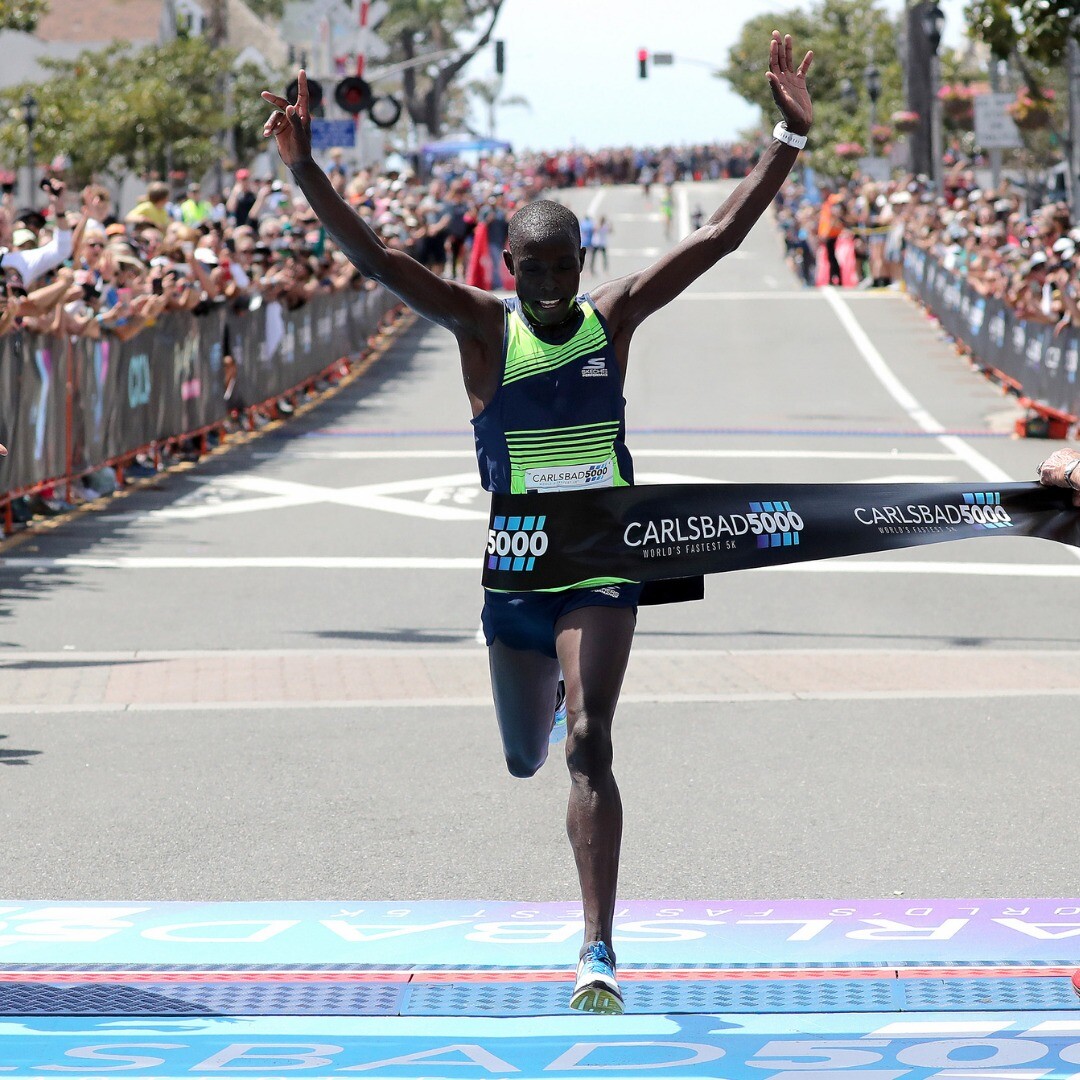
“I’ve been running on the track for a long time and I felt like I was losing my speed. I decided that it was the best option to slowly move back and switch to the roads," he explained.
"I started with the 5km and 10km and I noticed that I was running a bit slower…it wasn’t like back in the day when I used to run in the 800m and 5000m,”
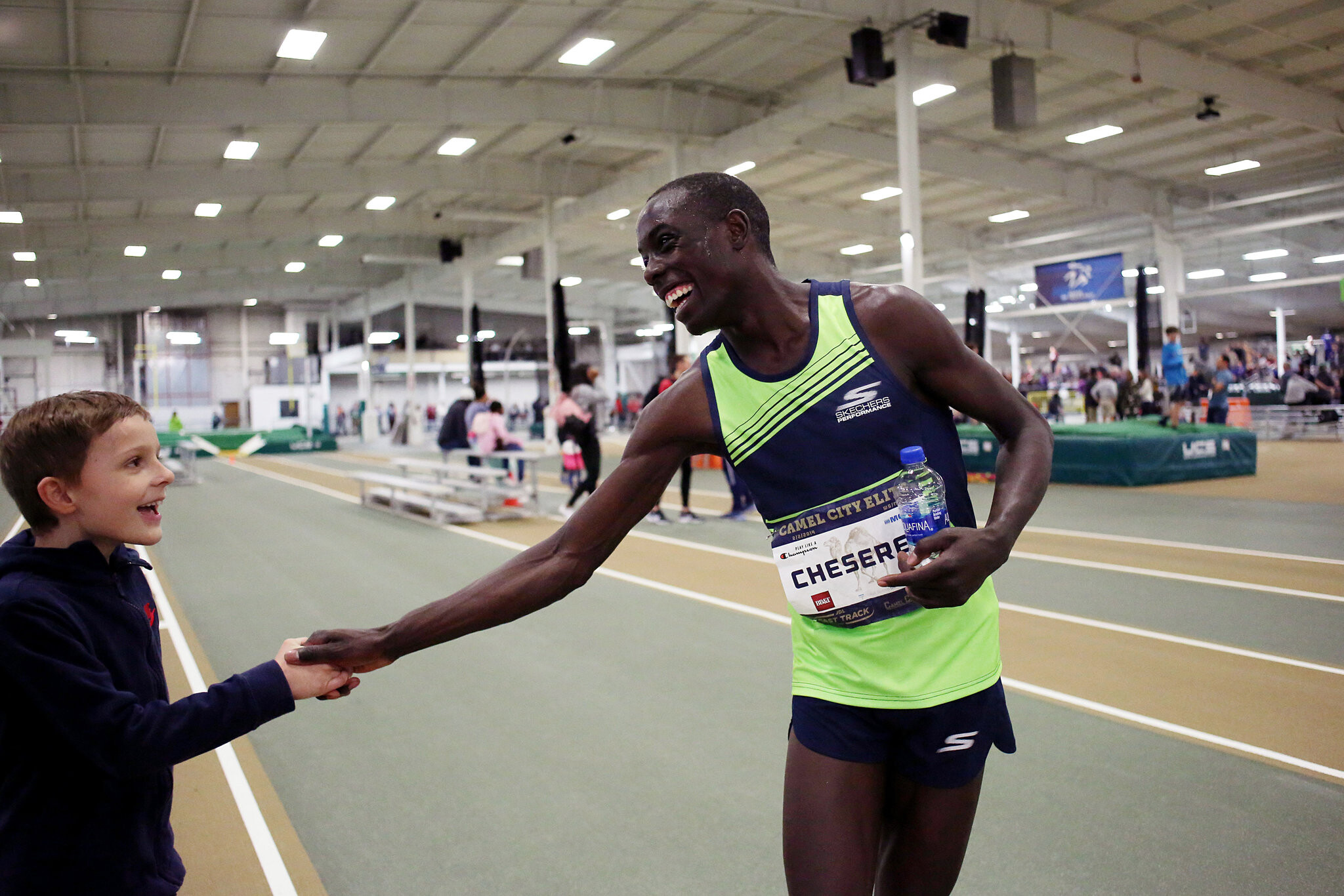
Cheserek added that he noticed the change back in 2019 and after the Covid-19 pandemic, he decided to try out road running. However, he explained that it was something normal and did not freak him out.
Meanwhile, Cheserek also made a revelation that his father was the one who convinced him to try out running. Before then, he was a football player.
“Back in the day, my father encouraged me to switch from football to running. However, I hated running but I decided to just give it a try,” he said.
(11/14/23) Views: 87Abigael Wuafula
Runner’s knee requires more tailored treatment, new study shows
Patellofemoral pain, also known as runner’s knee, is common among runners. Not only is it painful, but it can be difficult to get rid of, and in many cases, it can become a recurring problem. Reasons why runner’s knee is so difficult to cure permanently have remained a mystery, but new research has shed some light on where we might be going wrong. According to a new study from the University of Connecticut, traditional rehabilitation methods for chronic knee pain may not be targeting the right muscles. This research highlights the need for personalized rehabilitation to effectively address patellofemoral pain.
The study
The study, published in Physical Therapy in Sport, aimed to identify the commonly weaker muscles in patients with chronic patellofemoral pain. Previous research indicated that the glute and quad muscles were the main targets for treatment, so the researchers expected those muscles to be smaller in size in injured runners compared to healthy runners.
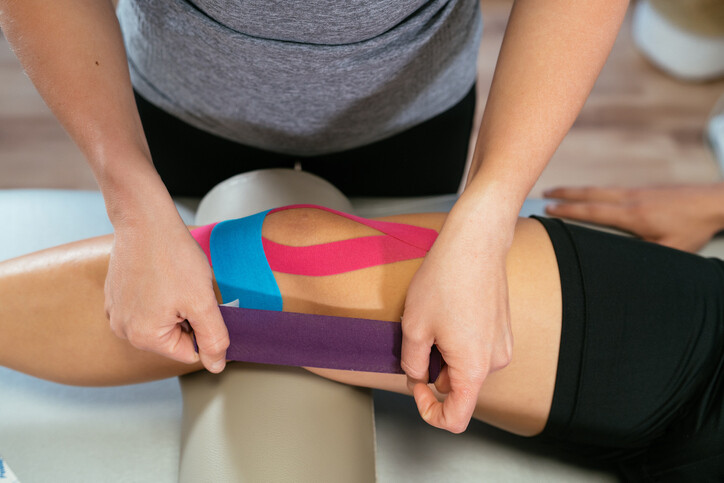
Surprisingly, the researchers found no significant differences in the size of these muscles between patients with patellofemoral pain and patients without. Instead, they discovered that the muscles at the front of the hips, the deep external hip rotators and hamstrings were smaller. They also found that not all patients had impairments in the same muscles.
What does this mean for runners?

These findings have important implications for runners dealing with knee pain. The traditional approach of targeting the quads and hip muscles may not be sufficient for all individuals.
“I think it demonstrates the need to individualize patients’ treatment,” says lead researcher Neal Glaviano. “We, as clinicians and researchers, need to quantify which muscles have impairment and target those in a patient’s treatment.”
Glaviano’s next step will be to investigate how therapists and sports medicine practitioners can better tailor rehab programs to individuals, so they target the specific muscles that are causing the injury.
The takeaways
While the need to tailor rehab programs to the individual isn’t groundbreaking information, this study highlights that the current approach to treating patellofemoral pain in runners isn’t being tailored enough, and in many cases, may not be focusing on the right muscles. The traditional focus on the quads and hip muscles may only be effective for some individuals.
By identifying and targeting the specific muscles that are weaker in each patient, rehabilitation interventions can be better tailored, potentially improving long-term outcomes and the overall quality of life for those experiencing chronic knee pain.
(11/14/23) Views: 87Brittany Hambleton
Edinah Jebitok and Ronald Kwemoi reign in Seville
Edinah Jebitok and Ronald Kwemoi achieved a Kenyan double at the Cross Internacional de Italica, the fourth World Athletics Cross Country Tour Gold meeting of the season, held on the outskirts of Seville on Sunday (12).
Making their debuts at the event, Jebitok and Kwemoi claimed the titles on a sunny and pleasant afternoon after respective sprint finishes against Ethiopia's world U20 champion Senayet Getachew and Kenya's Hillary Chepkwony.
In the absence of pre-race favourite Beatrice Chebet, who withdrew on the eve of the event because of illness, the women's 9918m contest opened at a brisk pace set by Jebitok, who only had her compatriot Winnie Jemutai, Ethiopians Getachew and Wede Kefale, and Uganda's Annet Chelangat for company just one minute into the race. Way back, Britain's Amelia Quirk, Kate Axford and Phoebe Barker led the chasing group alongside Spain's European U20 champion Maria Forero and her compatriot Carolina Robles.
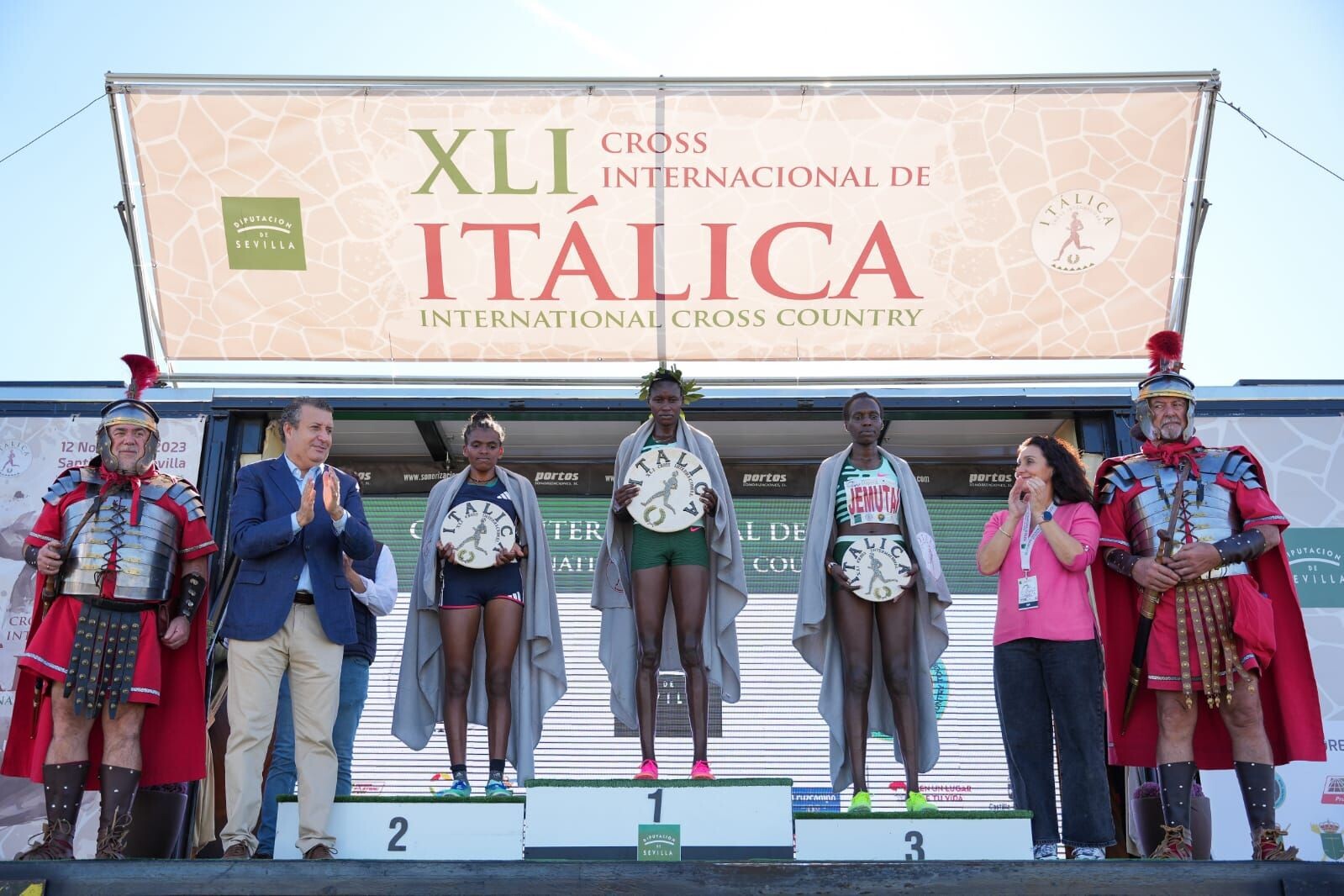
Jebitok broke away from the rest of the lead group at the start of the second 2450m circuit and built a five-second margin over Getachew midway through that lap. Getachew was another four seconds clear of Jemutai and gradually she reeled in Jebitok, until they were running together at the helm midway through the race. Jemutai was a lonesome third, while Kefale and Chelangat were further back. Behind them, Quirk and Forero took turns leading their group, followed by Robles and Axford.
Throughout the penultimate loop, Jebitok and Getachew tried to lose each other but neither managed to do so. By the bell, the pair had built a 20-second margin ahead of Jemutai, while Forero and Quirk were in sixth and seventh place, and would fight to be the first European home.
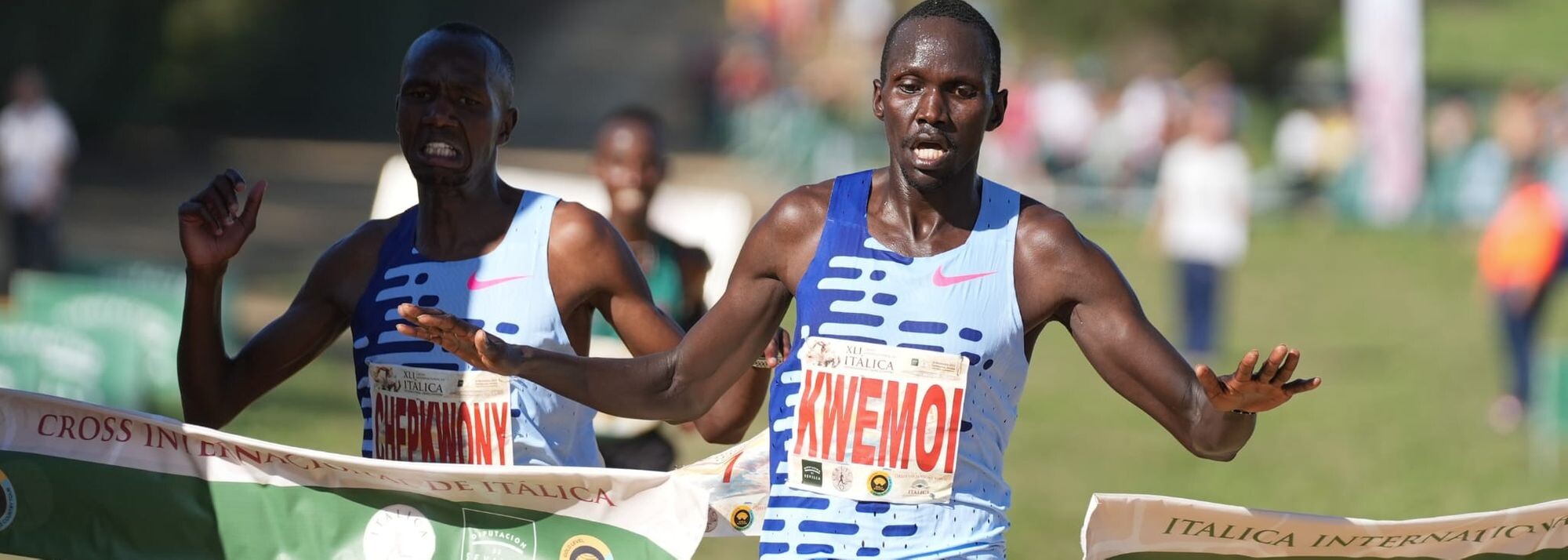
Already on the closing lap with the clock reading 25:40, Jebitok unleashed another kick and was able to leave Getachew behind for the second time, opening a six-second margin with 1000m remaining. Much to the delight of the large crowd watching, the Ethiopian bounced back and passed Jebitok with some 500m remaining. Jebitok then found another gear and reached the narrow final bend a few metres ahead, but to the astonishment of the crowd she stopped in the belief that she had crossed the finish line.
Getachew took advantage and overtook her, entering the home straight in the lead, but Jebitok – a 1500m specialist – didn't surrender and passed her rival in the final metre to win by the narrowest of margins. Both athletes were credited with a finishing time of 32:39, well clear of Jemutai who was third in 33:37. Chelangat was fourth and Kefale fifth, while 20-year-old Forero got the better of Quirk to secure sixth.
“I'm so satisfied with my European tour as I have won twice and was runner-up in Atapuerca,” said Jebitok. “My main goal is to be the overall victor of this season's Cross Country Tour.”
Kwemoi maintains momentum
The men's race was also held over 9918m and witnessed an early lead by the in-form Kwemoi, as the 28-year-old – who set the world U20 1500m record in 2014 – set a brisk pace that could only be followed by his compatriots Chepkwony and Ishmael Kipkurui, the world U20 champion, plus Burundi's Rodrigue Kwizera and Uganda's Martin Kiprotich. The opening lap was covered in 7:07, with the lead group also featuring the Spanish pair of world 5000m silver medallist Mo Katir and Abdessamad Oukhelfen, the 2019 European U23 cross country bronze medallist.
Clocking 7:17 for the second lap, Kiprotich, Kwemoi and Kwizera took on most of the pacing duties and Kipkurui and Chepkwony tucked behind. Some 6.7km into the race first Oukhelfen and then Katir could not live with the increasingly quick lead pace and lost ground. By the bell (7:13 for the penultimate lap), five men remained in contention while Katir and Oukhelfen travelled five and seven seconds in arrears, respectively.
The closing lap became more than thrilling as Kwizera pushed hard, trying to avoid a massive sprint, but the Burundian’s efforts only managed to leave Kiprotich behind, while Kwemoi, Kipkurui and Chepkwony, who ran conservatively always at the back of the main group, remained at Kwizera's shoulder.
The next casualty was Kipkurui and the race turned into a fascinating three-horse battle. Chepkwony moved to the front for the first time with around 500m remaining and his change of speed could not be replicated by Kwizera. Chepkwony reached the final bend still ahead of Kwemoi, but the latter finally prevailed after an epic battle for the win.
(11/13/23) Views: 86World Athletics
Geoffrey Koech reveals what he is banking on ahead of Boston Half Marathon
Defending champion Geoffrey Koech has disclosed what he will be banking on as he gears up for the Boston Half Marathon on Sunday November 12.
The 30-year-old will be banking on his past victory and mastery of the course to propel him to his second successive victory on Sunday. He had a great build-up towards the race and will hope to execute it well.
He has so far competed in three half marathons where he finished third in two races, Publix Atlanta Half Marathon and Prague Half Marathon. He finished fourth at the Principality Cardiff Half Marathon.
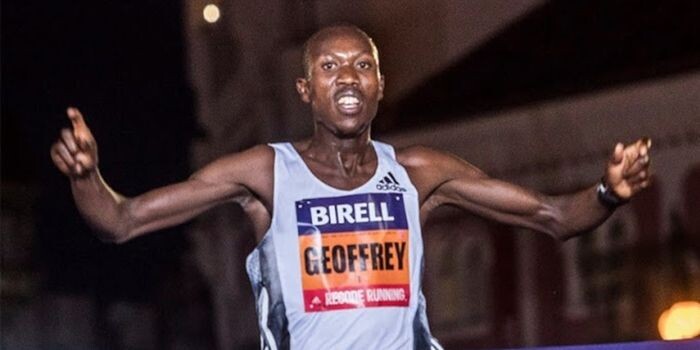
“It feels very nice to be coming back to Boston, knowing that I am the reigning champion. I have trained specifically for this year now that I know the course," he said.
"Even though the course is challenging, I like it and I think my experience from last year gives me an advantage over those who will be doing it for the first time.
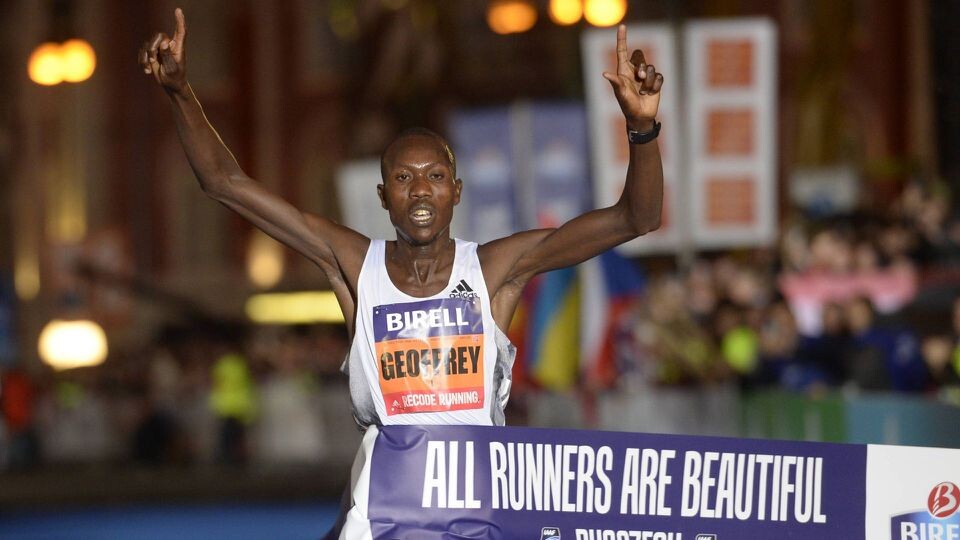
"We have hilly courses around my hometown of Kericho, so I have been adding some tough routes into my training, so my legs are used to it,” Koech said as per the race organisers.
Koech also explained that the fans give him a lot of encouragement and make him confident of winning the race.
He will be hoping that this time around, the fans will also play a huge role as he targets to win the race once again.
“The spectators gave me a lot of encouragement last year and made the course feel a lot easier. It’s so inspiring to be cheered all through the course," said Koech.
"The people of Boston are very friendly and welcoming to me. My goal is to win again this year so I hope I can do that and make the fans happy again.
"I like to run in temperatures between 59-64F and preferably no rain! I wonder what we will get on race day! See you soon, Boston."
(11/10/23) Views: 82Abigael Wuafula
Two easy interval sessions for beginner runners
Not sure how to introduce speedwork to your running routine? Here's how to get started.
Experienced runners love to throw around terms and acronyms that can be intimidating to those who are new to the sport. Intervals and speedwork can sound daunting, and new runners often avoid tackling them until they’ve been logging regular miles–sometimes for years! But speedwork can be a game-changer in terms of your race results. While most of your runs should be run at an easy, conversational pace, shorter, faster sessions will help your legs (and your mind) get used to the faster paces required when racing. You’ll also boost your heart and lung efficiency, and switching things up will make your run fly by.

If you’ve been running regularly for six months and are injury-free, it’s safe to start incorporating short interval sessions into your training once a week, progressing to twice a week after a few months, provided you don’t develop any injuries. As you get more comfortable, you can add repeats or lengthen intervals. You can run intervals on the road, trails, track, or treadmill.
1.- Intro to intervals
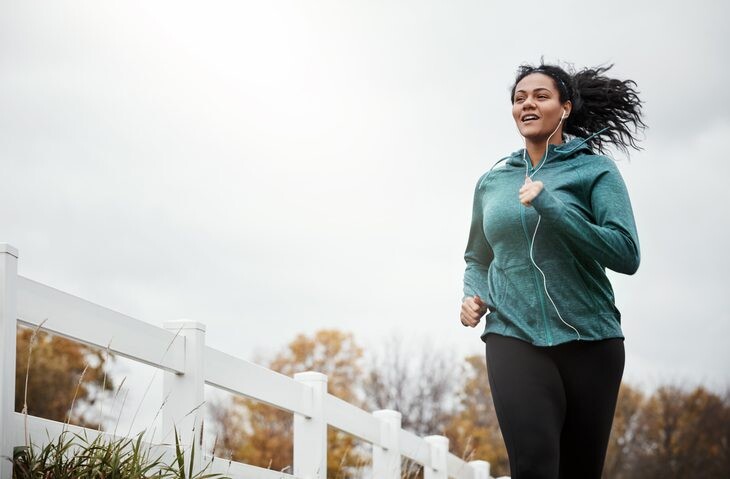
This workout is perfect if you’re new to intervals, or finding your way back after a break from running. It can be tempting to run very hard in the first few seconds or minutes of your faster intervals, but aim to find a challenging pace that you can sustain through all five repeats. This may take practice, and don’t be discouraged if you don’t nail it on your first few tries. Feel free to run fewer (or more) repeats, or add more recovery time if needed.
Warm up by running very easy for five to 10 minutes (and walk breaks are OK).
Run at a moderate effort for one minute, then run or walk at a very easy pace for two minutes to recover. Repeat the three-minute interval cycle four more times.
Cool down by running easily or walking briskly for five to 10 minutes.
2.- Pick up the pace
Once you become comfortable with adding some speed to your training, level up with these harder intervals. Don’t worry about pace during your run–stay focused on your effort.
Warm up by running or walking at an easy pace for five to 10 minutes.
Run at a hard effort (almost as hard as you can go) for 30 seconds, then recover by running at a very easy pace (or walking) for 30 seconds. Repeat this one-minute interval cycle three more times, and finish by running at a very easy pace for two minutes.
Run at a hard effort for one minute, then run or walk very easy for one minute. Repeat this two-minute interval cycle two more times.
Cool down by running at a very easy pace (or walking) for five to 10 minutes.
Follow speedwork or a more challenging running day with a very easy session or a rest day.
(11/10/23) Views: 80Keeley Milne





